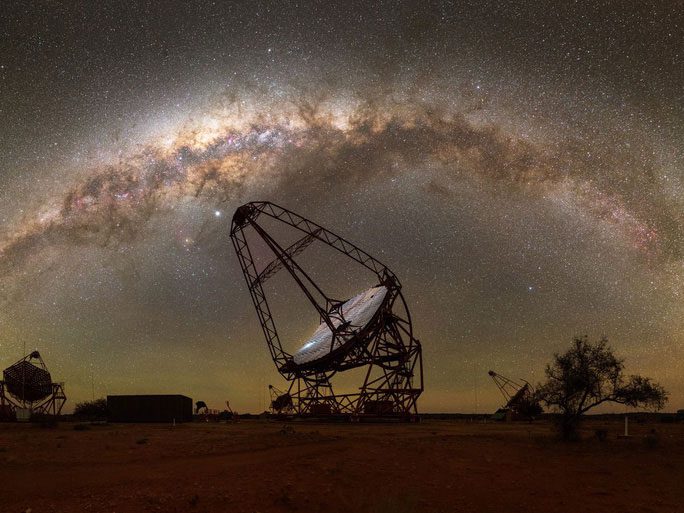A rare star has been discovered located 4.566 light-years from Earth, which produces a spectacular fireworks display every 15 years, potentially caused by its vampiric behavior.
According to Science Alert, a research team led by astrophysicist Ruslan Konno from the German Electron Synchrotron (DESY) and the HESS Collaboration examined the binary star system RS Ophiuchi in the constellation Ophiuchus and found that one of the two stars generates a burst of energy every 15 years.

The HESS telescope system detected signals from the unusual thermonuclear explosion, leading to the discovery of the fearsome star – (Photo: HESS Collaboration).
This explosion has been identified as being caused by the star “burping” after greedily siphoning material from its unfortunate companion every 15 years. Only 10 stars with similar behavior have been recorded.
The vampire star is a white dwarf, while its victim is a red giant, similar to most other binary systems with vampire stars. However, what is unique is that instead of the white dwarf meeting its permanent end in the form of a supernova, leading to the explosive demise of its companion, it generates “burps” in the form of smaller nova explosions, becoming nearly immortal.
Specifically, as they orbit each other, the white dwarf, with its impressive gravitational force, has siphoned hydrogen and other materials from the red giant. This material accumulates around the surface of the white dwarf and gradually heats up. Periodically, the mass of material becomes large enough that the pressure and temperature in the bottom layer trigger a thermonuclear explosion, ejecting what it has “eaten” over the past 15 years into space.
Though termed small, these thermonuclear explosions are powerful enough to emit cosmic rays in the form of gamma radiation in all directions, strong enough that a world 4.566 light-years away, like Earth, can still receive signals.
The HESS telescope system of the HESS Collaboration, located in Namibia, has captured these explosive signals.
The research was recently published in the journal Science.





















































